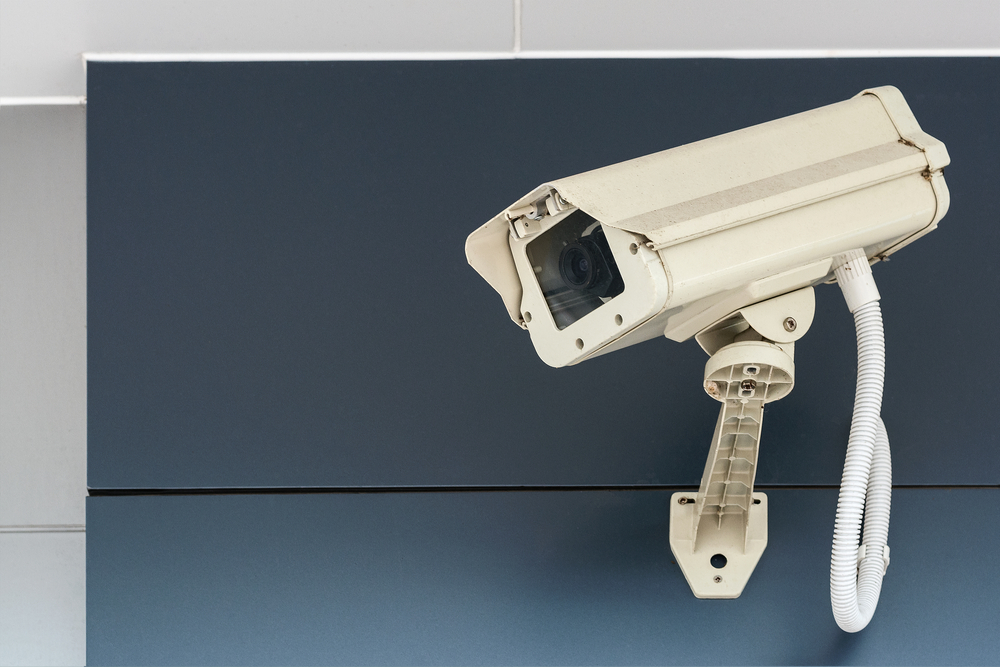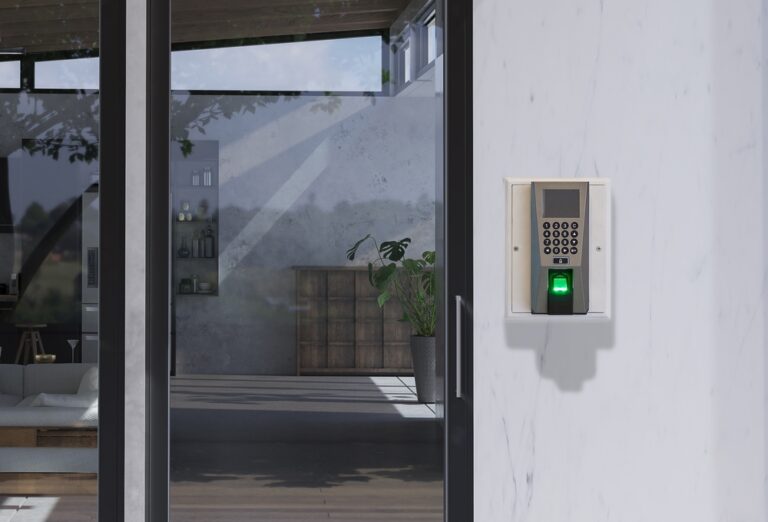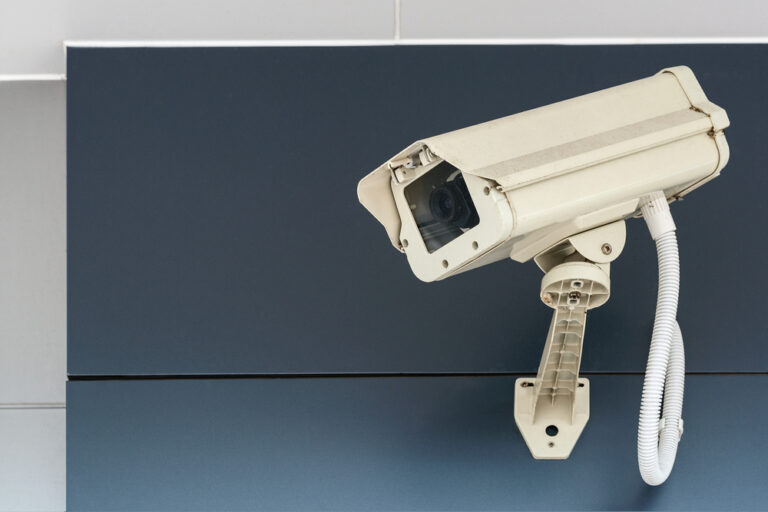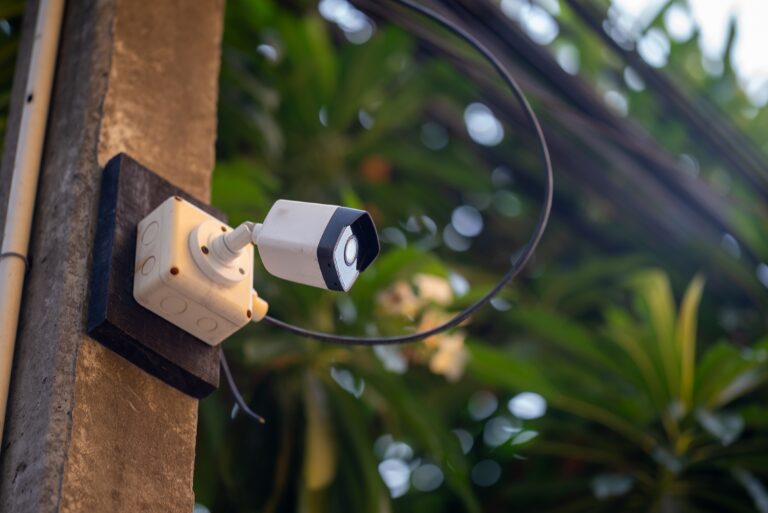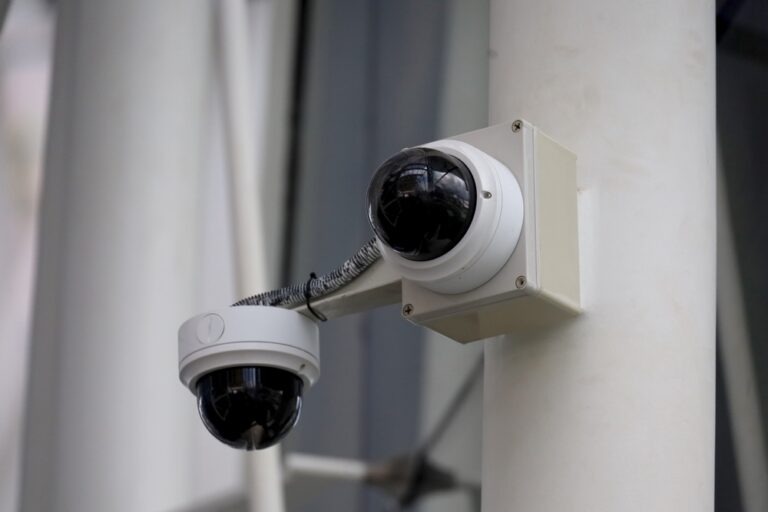- 1) Introduction
- 2) Components of a Magnetic Lock
- 3) Considerations for Magnetic Lock Systems
- 4) Step-by-Step Installation Guide
- 5) Electromagnetic Locks
- 6) Benefits of Magnetic Locks for Doors and Storefronts
- 7) Tips for Maintaining and Troubleshooting Magnetic Locks
- 8) Professional Help and Troubleshooting
- 9) Conclusion and Final Thoughts
- 10) FAQs
Introduction
Installing a magnetic lock on doors and storefronts is one of the most effective ways to enhance security. Magnetic locks, also sometimes called maglocks, use electromagnetic force to securely keep a door closed. When powered on, a metal plate on the door creates a strong bond with the lock’s electromagnetic mechanism, preventing the door from opening. The lock disengages when power is cut off, allowing the door to open freely.
Compared to traditional locks with keys or keypads, magnetic locks have some unique advantages:
- Increased security – Maglocks cannot be tampered with or picked like mechanical locks. The powerful electromagnetic bond keeps the door securely closed against force.
- Convenience – Magnetic locks can be integrated with access control systems to open doors automatically. This allows easy access control without having to issue keys or codes.
- Durability – Properly installed magnetic locks last for many years with little maintenance required. The locking mechanism has no moving parts and is designed for continual use.
Key Takeaways
| Provides Strongest Access Control | Enables Integration Capabilities | Long Operational Lifespan |
|---|---|---|
| Industrial electromagnetic locks withstand over 2,500 lbs securing force making doors virtually impenetrable to intrusions | Magnetic locks interface with access control systems, video and alarms advancing management visibility and intelligence | Properly installed electromagnetic locks function reliably over decades with minimal maintenance required compared to mechanical locks |
| Flexible Strength Options | Consult Experts for Optimal Security |
|---|---|
| Electromagnetic locks scale from small doors to bank vaults with hold force models from 500 lbs up to over 10,000 lbs | For properly customized and integrated magnetic lock defenses meeting risk priorities, leverage providers like Jefferson Security Cameras |
This guide will walk through everything you need to know about installing magnetic locks. We’ll cover:
- Magnetic lock components and mechanics
- Design considerations when selecting maglocks
- Step-by-step installation instructions
- Different types of electromagnetic locks
- Benefits of using maglocks on doors and storefronts
- Popular applications for magnetic lock installations
- Tips for maintaining and troubleshooting your system
- When to call a professional security installer
Properly installing electromagnetic door locks requires some technical skill and know-how. This guide aims to provide comprehensive information both for DIYers and those looking to better understand professional installations. We’ll also discuss why partnering with a reliable security provider like Jefferson Security Cameras can be beneficial.
Components of a Magnetic Lock

Installing a magnetic lock requires several key components that work together to securely bond the door closed. Understanding these components is important for proper installation and troubleshooting. The main pieces of a maglock system include:
Magnetic Lock Mechanics
The magnetic lock itself consists of an electromagnet or inductive coil mechanism mounted to the door frame which magnetically bonds with a metal armature plate installed on the door. This creates the holding force keeping the door shut. Key aspects include:
- Electromagnets – Produce magnetic force when electrical current flows through the coiled wire. Different strength options available.
- Armature plate – Steel plate installed on the door containing ferrous metal to magnetically attach to the lock’s magnetism.
- Housing – Protective casing that houses the lock’s functional electromagnetic components.
The lock attaches firmly when energized, allowing the door to open only when power is removed, a switch is triggered, or sufficient force manually overcomes the magnetic bond.
Power Supply
The electromagnetic lock requires consistent power to keep the electromagnet or inductive coil energized, supplied by a plug-in or hardwired power supply. This converts and regulates voltage from the building to properly power the lock. Considerations for the power supply include:
- Input/output voltage – Must match building supply voltage and the lock’s voltage.
- Current rating – Power supply must provide sufficient amps for magnetic strength.
- Wiring – Power supply may connect directly or require wiring to the lock.
- Backup battery – Keeps lock energized if primary power is disrupted.
Wires and Cables
Low-voltage wiring connections transmit power from the power supply to the magnetic lock mechanism. Proper wire gauge and installation is critical for reliable functionality.
- Wire gauge – Thicker wires needed to handle higher voltages over longer cable runs.
- Wire composition – Stranded vs solid core wires have tradeoffs.
- Cable routing – Wires must be properly secured and protected.
This covers the essential hardware in a basic magnetic lock installation. However, additional access control components are often integrated into the system for convenience and enhanced capabilities.
Considerations for Magnetic Lock Systems
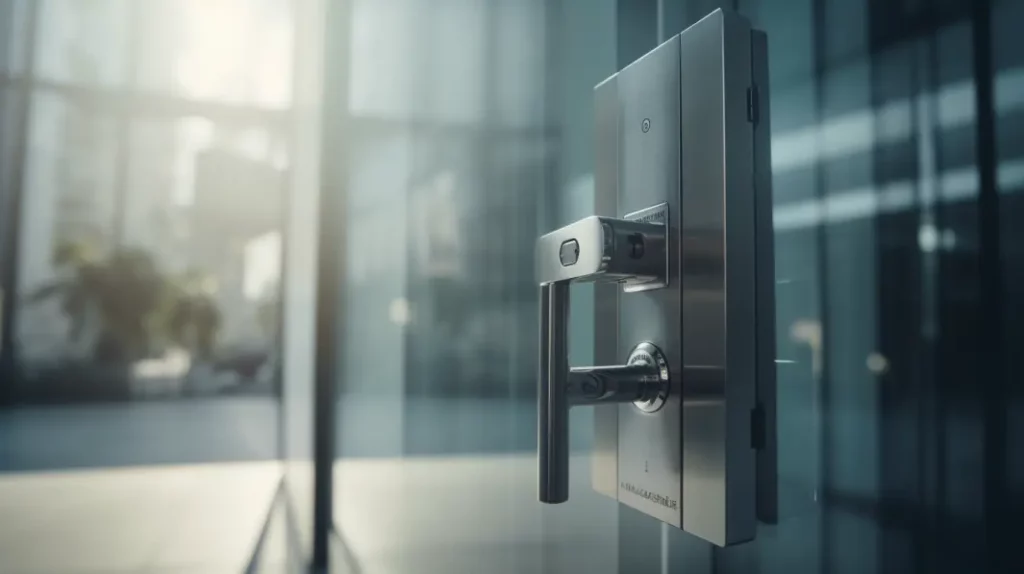
Selecting the right magnetic lock involves balancing factors like budget, installation requirements, and performance needs. Key aspects to consider:
Price
Magnetic locks are available at various price points depending on size, strength, brand, and features. Prices can range from:
- $100 – $300 for basic electromagnetic locks
- $300 – $800 for mid-range access control maglocks
- $800+ for heavy-duty and custom solutions
While cheaper locks may save upfront costs, they often lack capabilities and durability compared to professional-grade locks from trusted manufacturers. Investing in quality equipment from reputable security providers like Jefferson Security Cameras pays dividends through better performance, security, and longevity.
Ease of Installation
Installing magnetic locks requires drilling holes, running cabling, wiring connections, and adjusting alignment. Difficulty can vary significantly based on factors like:
- Door type and frame construction
- Cable access between hardware locations
- Power supply location and wiring complexity
- Integration with other access control components
Using magnetic locks with pre-drilled armature plates, wireless connectivity, and all-in-one type assemblies can greatly simplify installation.
Function
Maglocks suitable for a commercial storefront have very different requirements than a lock for a residential bedroom door. Considerations include:
- Size and holding force needed
- Power options and backup needs
- Integration with other security systems
- Frequency of access needed
- Exposure to environmental factors
Properly evaluating functional requirements and selecting hardware designed for your application is crucial. Consulting security experts can be invaluable for more complex needs.
Step-by-Step Installation Guide
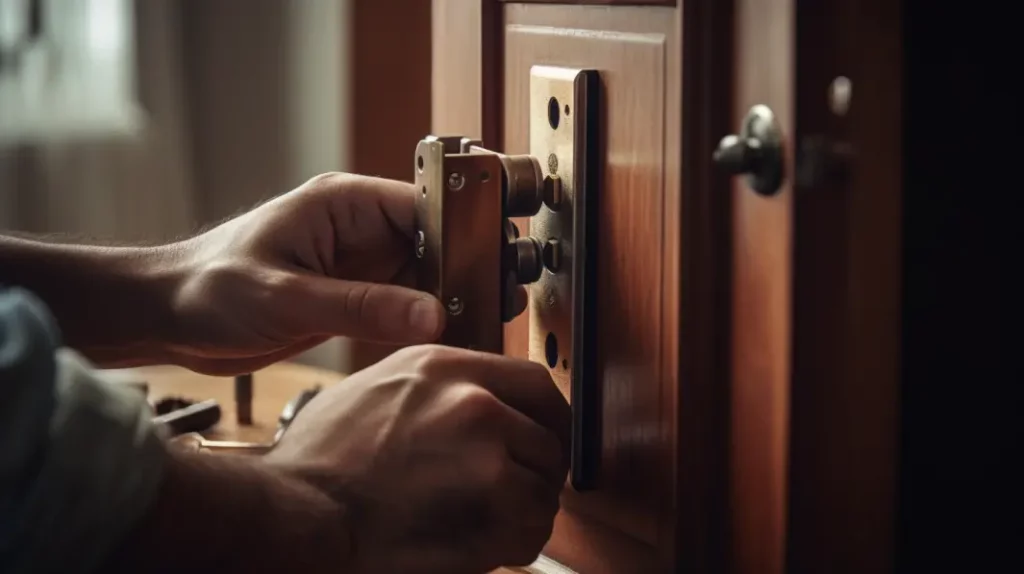
Once you have all the necessary magnetic lock components and accessories, proper installation is crucial for functionality and security. Follow these key steps:
Mounting the Power Supply
The power supply provides consistent electricity to energize the electromagnet.
- Select an accessible indoor location near an electrical outlet like a utility closet.
- Securely mount the enclosure to the wall using included hardware.
- Connect the input power cable and plug into the wall outlet.
- Leave output wiring accessible for connecting.
Routing Wires and Cables
Cables transmit power from the supply to the lock mechanism.
- Select proper wire gauge for cable run distance and voltage.
- Run cabling through walls/ceilings using protective conduit.
- Secure cables every few feet using clamps.
- Leave 6-12 inches of slack wire at both ends.
Mounting Accessories
Accessories provide supplemental functionality.
- Armature plate mounts to the door for the magnet to bond to.
- Access controllers (card readers) attach near the door.
- Exit buttons mount inside for easy egress.
- Ensure proper alignment with the lock location.
Connecting Accessories to Power Supply
Cables from accessories all terminate at the power supply.
- Refer to wiring diagrams for proper cabling.
- Connect cables to output terminals securely using screw terminals.
- Confirm accessories are powered on.
Powering On and Testing
The final commissioning step is activation and validation.
- Energize the electromagnet by turning on power supply.
- Check door bonding magnetically to frame and armature plate.
- Verify unlocking operation when power cut or access control triggered.
- Re-check cable connections and voltage if issues occur.
With everything properly installed and activated, the magnetic lock system should securely bond the door closed until intentionally disengaged. Routine maintenance helps ensure ongoing reliable operation.
Electromagnetic Locks
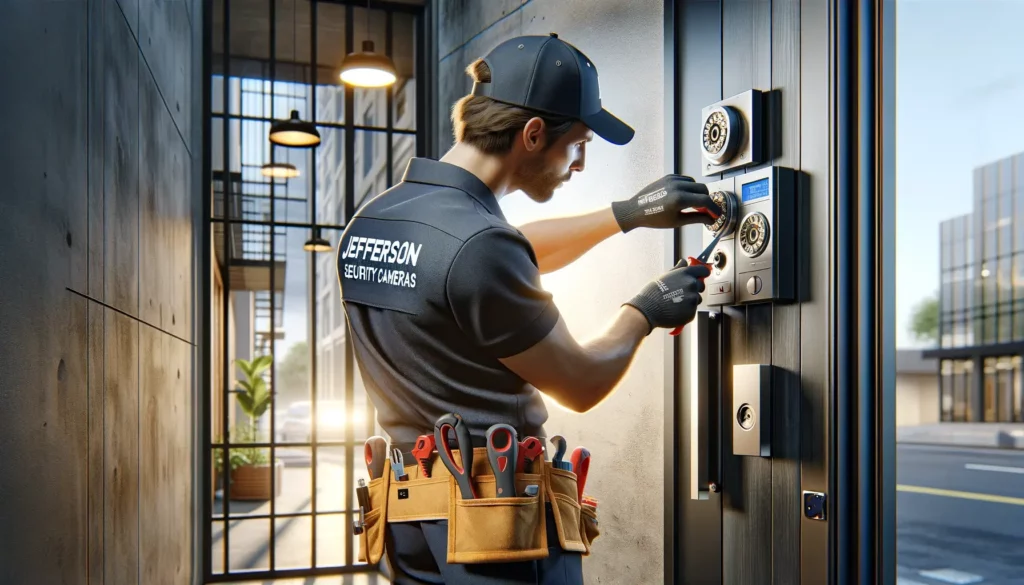
Electromagnetic locks are the most common and cost-effective type of magnetic lock. They use a standard electro magnet design consisting of a metal coil wrapped with copper wire. When powered, flowing electrical current creates a magnetic flux which forms a strong attractive force with ferrous metals.
How Electromagnetic Locks Work
The electromagnetic lock mechanism contains a metal core surrounded by precisely wrapped copper wiring which acts as an electromagnet when powered. The power supply sends electrical current through the coil, initiating a magnetic flux. The energized coil magnetically bonds to the lock’s armature plate mounted on the door which contains ferrous metals. This creates the powerful yet removable locking force.
When power is removed via a switch, access control signal, or manual exit device, the magnetic bond is instantly broken, allowing the door to freely open. Power is only drawn when activated; standard electromagnetic locks consume around 0.5 Amps when locked. Their low power, high strength design provides flexibility for integration into access control, alarm and monitoring systems.
Benefits of Electromagnetic Lock Options
With electromagnetic lock models providing door bond strength ranging from 500 lbs to 2,500+ lbs, suitable options exist for lightweight interior doors to industrial steel doors. Modular style electromagnetic locks allow the magnet housing to mount on either the frame or door surface for easier installation. Having the option for surface, mortised or recessed mounting depending on site conditions makes project execution easier.
The wiring and voltage needs also vary depending on application:
- 12 to 24VDC for lighter duty residential or commercial doors
- 24VDC for industrial doors requiring 1,000 to 1,500 lbs strength
- Higher voltage 36VDC or 48VDC locks offer extreme strength 2,000 lbs+
This range covers most standard door security applications. However specialized high security installations like bank vaults may utilize even greater voltage and custom electromagnetic solutions exceeding 10,000 lbs bonding force.
By selecting the properly rated electromagnetic lock for the application’s access patterns, door type and desired security level, this technology can effectively address most needs. Compared to electronic strikes and other mechanisms, standard electromagnetic locks provide optimum adaptability to manage security risks. They strike an ideal balance of cost, strength and integration flexibility for the majority of installations.
Inductive Locks
Inductive locks provide another category of magnetic locks utilizing inductive coils instead of standard electromagnets. They consist of an inductive metal coil in the lock body which creates a magnetic field attracting a passive inductive plate on the door. No external power is required at the door.
How Inductive Locks Work
Inductive lock systems contain a coil wound from insulated copper wire which initiates an electromagnetic field when energized. This inductive coil gets housed in the lock enclosure separate from the door. A passive inductive plate gets mounted to the door itself, composed of an aluminum back plate fitted with a ferromagnetic steel plate.
When the power supply sends an electrical charge to activate the inductive coil, it transforms this current into magnetic flux. This in turn magnetizes the passive door plate via the magnetic field. The interaction of the flux between coil and plate creates the holding force that secures the door.
Access control signals or emergency exits simply power down the inductive coil to eliminate the magnetic bond instantly. With a maximum 1.5 amp current draw, inductive locks utilize power efficiently. Their unique approach removes the need to electrify door components improving safety and longevity.
Benefits of Inductive Lock Systems
Properly designed and matched inductive lock systems can provide optimal functionality for certain applications where electromagnetic locks may have limitations.
Removing powered components from the door itself improves reliability by avoiding wiring and electronics exposure to closing/opening shocks and tampering. It also prevents energized wires crossing the door gap violating fire codes. Instead, just an unpowered aluminum/steel plate gets mounted on the door making installation faster without complex wiring.
Inductive locks also emit low EMI and RFI noise. By containing the electromagnetic components entirely inside the protected lock housing rather than exposing wires on the wall/frame, they avoid signal interference with access control devices. This helps boost system performance when utilizing RFID cards, keypads and other electronics.
Typical inductive lock applications:
- Interior commercial doors
- Light industrial doors
- Retrofitting existing doors quickly
- High traffic volume access points
Electromechanical Locks
Electromechanical locks combine electromagnetic locking with integrated mechanical lock cylinders for versatile hybrid security functionality. The dual mechanisms deliver enhanced protection while retaining fail-secure operability with user familiarity if power fails.
How Electromechanical Locks Operate
The electromechanical maglock design houses the electromagnetic locking components directly within a self-contained mechanical lock body. This enables managing access electronically via wired or wireless connectivity while retaining physical key override as backup.
Mechatronic cylinders fitted into the unit integrate the credentials readers, electromagnetic gear drives and onboard logic processor controlling access permissions. When valid credentials are presented and access authorized such as by swiping a keycard or entering a fob code, the electromagnetic lock activates. The coil magnetically bonds the door securing it closed until a subsequent authorized credential or exit signal triggers it to open.
If power fails, the mechanical key cylinder provides continuous operation. This fail-secure design ensures persistent security avoiding disruptions, with audit trails capturing all activity. The marriage of electronic and mechanical technologies delivers the advantages of both.
Advantages Over Standard Mechanical Locks
While traditional master-keyed mortise or cylindrical locks provide robust physical security reliably for decades, they lack deeper functionality. Standard locks cannot:
- Connect with systems for remote monitoring and control
- Dynamically manage access permissions and schedules
- Automatically lock/unlock doors for convenience
- Log activity attempts and events for auditing
- Alter access instantly without rekeying when credentials get compromised
Integrated electromechanical locks empower elevating capabilities while retaining resilience.
Versus Standard Electromagnetic Locks
Similarly, basic electromagnetic locks securely bond doors with flexible control yet forfeit security if power fails. Although backup batteries provide short-term protection, they add cost over time and ultimately still risk disruption. The redundancy of mechanical override solves this vulnerability for maximized continuity. Electromechanical locks also avoid issues created by inertially activated electromagnetic locks slamming open from strong force or winds.
On balance, electromechanical locks deliver optimized capabilities, connectivity, assurance and value across widening risk profiles from offices to healthcare to education and more. Their versatile hybrid platform streamlines moving organizations forward on technology without forfeiting durability and protections. With programmable intelligence, anywhere administration and scalability, they provide a strategic pathway improving and future-proofing security posture over time.
Benefits of Magnetic Locks for Doors and Storefronts

Installing magnetic locks on doors and storefront openings provides important security, convenience and infrastructure benefits beyond what traditional locking mechanisms can offer.
Increased Security
Magnetic locks represent one of the most secure methods for restricting access to protected areas. Core security advantages include:
- Superior strength – Industrial-grade electromagnetic locks can withstand over 2,500 lbs of force unable to be broken or compromised by intruders.
- Tamper-proof – With no externally accessible components, magnetic locks cannot be picked, shimmed or bump keyed like mechanical locks.
- Integration – Maglocks seamlessly incorporate with video surveillance, alarms and access control platforms, enabling robust, multilayered security ecosystems.
- Flexibility – Magnetic locks can be sized, powered and controlled to securely suit virtually any door or opening application.
Properly installed and integrated magnetic door locks provide the highest caliber access restrictions across risk profiles.
Convenience
While providing ironclad access control, magnetic locking mechanisms enable much more versatile use compared to traditional locks:
- Doors can open instantly and hands-free via remote signals and integrated sensors
- Schedules, groups and permissions can automate locking/unlocking for convenience
- Events like fire alarms can trigger emergency free egress when needed
- Audit trails log all access activity for reporting and notifications
This advanced functionality allows users to move freely without keys or stopping to unlock/lock doors manually. Facility supervisors have extensive control customizing access as needed.
Durability

With no moving parts and simple solid-state components, robust magnetic locks withstand years of high traffic use over 3 times longer than average mechanical locks. Routine cleaning and periodic component checks keep them functioning like new. Compared to complicated mechanical locks with springs, gears, cylinders and complex mechanisms prone to wearing out and failing unexpectedly, maglocks virtually never need anything repaired or replaced if properly installed upfront. Their exceptional longevity provides excellent return on investment while avoiding disruptions.
On balance, electromagnetic and inductive door locks deliver the optimum blend of security, capabilities and lifecycle value making them a staple across institutional, commercial and even residential access control systems. Reputable security integrators like Jefferson Security Cameras excel at properly installing magnetic locks to maximize their protections and functionality.
Commercial Storefronts
Protecting commercial retail storefronts with magnetic door locks has become very popular due to the key security and management benefits they enable. Properly installed electromagnetic and inductive locks secure facilities after hours while smart integration empowers intelligent capabilities advancing operations.
Securing Storefronts After Hours
Retail stores have intrinsically high risks from burglary and vandalism during closed hours given the valuable merchandise inside. However traditional mechanical locks can get compromised by picked, drilled or smashed by determined thieves. Electromagnetic locks installed on glass storefront doors provide far greater protection through:
- Resisting extremely high brute force – industrial electromagnetic locks withstand over 2,500 lbs securing doors to frames
- Preventing lock picking/bumping through the building via electromagnetic bonding without external access
- Allowing integration with glass break sensors to trigger alerts of tampering attempts
- Enabling video analytics monitoring door areas to further strengthen vigilance of threats
The powerful magnetic bond between electromagnetic locks and door plates means intruders cannot simply break through locks, doors or glass to enter. This 24/7 protection provides assured continuity before/after operating hours and overnight.
Enhancing Management Capabilities
Integration opportunities also facilitate automating and elevating retail storefront access control functionality:
- Door status sensors for monitoring usage patterns and diagnostics
- Employee access using credentials/codes during backdoor entry and opening procedures
- Remote mobile administration of permissions, schedules, groups by managers
- Integrating visitor, staff tracking with business intelligence analytics
This expands capabilities beyond just entry/exit to glean business insights, maintain visibility over staff, improve inventory accuracy and strengthen oversight into operations.
Because magnetic locks easily interface with broader systems via wires or wireless networking, they allow linking access points to core business platforms unlocking newfound efficiency.
The Convenience Factor
While fortifying security after hours, retail magnetic door locks also enable optimizing daily public access. Unlocking doors in the morning and locking up at night can trigger automatically based on set schedules for consistency and convenience.
During open hours, magnetic locks readily integrate sensors to detect patrons approaching doors, signaling automated unlocking for hands-free public entry. This facilitates free movement without stopping to use keys or cards supporting positive customer experiences. Signage and lights can also indicate when stores open/closed for further user clarity.
Properly designed electromagnetic lock installations balance robust retail protections with capabilities elevating management visibility while smoothing storefront access functionality overall.
Top access control integration firms like Jefferson Security Cameras specialize in leveraging magnetic locks to address retail needs.
Office Buildings
Office buildings represent prime candidates for installing door magnetic locks to control access. The high traffic volume through lobbies combined with the need to restrict unauthorized entry makes electromagnetic locks well-suited. Benefits include:
Multi-Tenant Entry Control
In shared office spaces with various companies on different floors, managing lobby access poses challenges. Magnetic locks interfaced with directory-integrated video intercom stations allow securely restricting building entry. Visitors call up intended offices for personalized entry while unfamiliar people get denied automatically strengthening perimeter security.
Electronic credentials also enable shared yet customized access permissions for staff across businesses. This empowers segmented lobby control despite communal space logistics.
Automating Locks on Office Floors
Beyond lobbies, leveraging magnetic locks on office floors themselves facilitates flexible automation capabilities:
- Locking/unlocking schedules synchronized with hours/shifts
- Remote door control like fire exits via software
- Logging all access events to each locked office door
- Sensors detecting attempted forced entries for alerts
This gives facilities administrators extensive visibility over office traffic for oversight while enabling intelligent capabilities.
Emergency Control Options
Magnetic locks also readily facilitate emergency control responses:
- Fire system integration to disengage locks across all doors
- Triggering targeted lockdowns of sensitive areas as needed
- First responder access using credentials routed to doors
Robust magnetic locks tailored for the office environment deliver versatile administration and automation advancing security, efficiency and infrastructure capabilities. Top access control integration firms like Jefferson Security Cameras install electromagnetic lock solutions scalable from small offices to major headquarters facilities.
Residential Homes
Installing magnetic door locks in homes continues gaining popularity to fortify protections cost-effectively. Electrified locking mechanisms once reserved for commercial facilities now bring advanced access control automating defenses securing households.
Hardening Exterior Doors
While home burglaries often involve smashing windows or forcing other vulnerable points, the majority start with prying open exterior doors using brute force. Typical residential-grade mechanical locks can succumb quickly to kicking, ramming shoulder barges or prying tools.
Upgrading to industrial electromagnetic locks bonding metal doors to frames with over 1,500 lbs of magnetism thwarts these intrusions. The military-grade strength resists any manual breaking in attempts. This halts the initial perimeter breach better than any conventional locks protecting homes.
Enhancing Whole-Home Security Ecosystems
Modern households increasingly integrate layers of protections spanning video doorbells, security cameras, motion detectors and smart lighting.
Interfacing powerful electromagnetic locks with these emerging home automation platforms allows consolidating oversight into singular dashboards or mobile apps for homeostasis. This connects the principal exterior door access barrier with broader monitoring and response ecosystem fortifying integrity through holistic coordination.
Streamlining Administration & Control
Managing household access leaves gaps with traditional keys lacking audit trails or flexibility to deactivate and add codes remotely as needed.
Magnetic locks interfaced with smart home controllers permit administrators easily assigning customized PINs with set durations, expiring past house guests’ codes instantly. This also enables capabilities like geo-based unlocking when homeowners physically arrive. Or tapping automation rules to engage added perimeter sensor vigilance when the house becomes unoccupied.
Access automation allows families maximizing security oversight further through technology. Leading security integration providers like Jefferson Security Cameras specialize in networking electromagnetic locks with complementary home systems advancing protections. Their expertise readily equips residential spaces with institutional-caliber access control.
Residential Homes
Installing magnetic door locks in homes continues gaining popularity to fortify protections cost-effectively. Electrified locking mechanisms once reserved for commercial facilities now bring advanced access control automating defenses securing households.
Hardening Exterior Doors
While home burglaries often involve smashing windows or forcing other vulnerable points, the majority start with prying open exterior doors using brute force. Typical residential-grade mechanical locks can succumb quickly to kicking, ramming shoulder barges or prying tools.
Upgrading to industrial electromagnetic locks bonding metal doors to frames with over 1,500 lbs of magnetism thwarts these intrusions. The military-grade strength resists any manual breaking in attempts. This halts the initial perimeter breach better than any conventional locks protecting homes.
Enhancing Whole-Home Security Ecosystems
Modern households increasingly integrate layers of protections spanning video doorbells, security cameras, motion detectors and smart lighting.
Interfacing powerful electromagnetic locks with these emerging home automation platforms allows consolidating oversight into singular dashboards or mobile apps for homeostasis. This connects the principal exterior door access barrier with broader monitoring and response ecosystem fortifying integrity through holistic coordination.
Streamlining Administration & Control
Managing household access leaves gaps with traditional keys lacking audit trails or flexibility to deactivate and add codes remotely as needed.
Magnetic locks interfaced with smart home controllers permit administrators easily assigning customized PINs with set durations, expiring past house guests’ codes instantly. This also enables capabilities like geo-based unlocking when homeowners physically arrive. Or tapping automation rules to engage added perimeter sensor vigilance when the house becomes unoccupied.
Access automation allows families maximizing security oversight further through technology. Leading security integration providers like Jefferson Security Cameras specialize in networking electromagnetic locks with complementary home systems advancing protections. Their expertise readily equips residential spaces with institutional-caliber access control.
Tips for Maintaining and Troubleshooting Magnetic Locks

Properly caring for magnetic lock systems through regular maintenance and correctly diagnosing any issues helps ensure consistently reliable operation for maximum longevity.
Regular Cleaning and Maintenance
While electromagnetic locks contain no moving parts, following periodic maintenance best practices prevents avoidable problems:
- Wipe down device housings inside and out to avoid dirt buildup
- Check all wiring connections are tight and cables undamaged
- Confirm adequate power supply voltage not nearing minimum threshold
- Test functionality like sensors and credential readers are responding
- Inspect door alignment to magnets avoiding gaps from sagging
- Lubricate electric hinges and other mechanical door pieces
Following a simple quarterly health checklist prevents premature breakdowns.
Common Issues and Solutions
When trouble arises, several usual culprits are common:
- Power – Disrupted electricity, blown fuses or wiring faults cut power delivery.
- Connectivity – Loose wire connections or damaged cables interrupt continuity.
- Alignment – Doors sagging over time lose proper armature contact.
- Settings – Access controller parameters, schedules or groups may need adjustments.
Revisiting fundamentals like power flow and physical installation often identifies root causes. Seeking professional support expedites restoration.top providers like Jefferson Security Cameras offer emergency magnetic lock repair services to diagnose issues promptly.
Following basic care guidelines combined with appropriate troubleshooting saves costs over the long-term lifespan while ensuring magnetic locks consistently deliver sought protections and capabilities keeping infrastructure reliable.
Professional Help and Troubleshooting
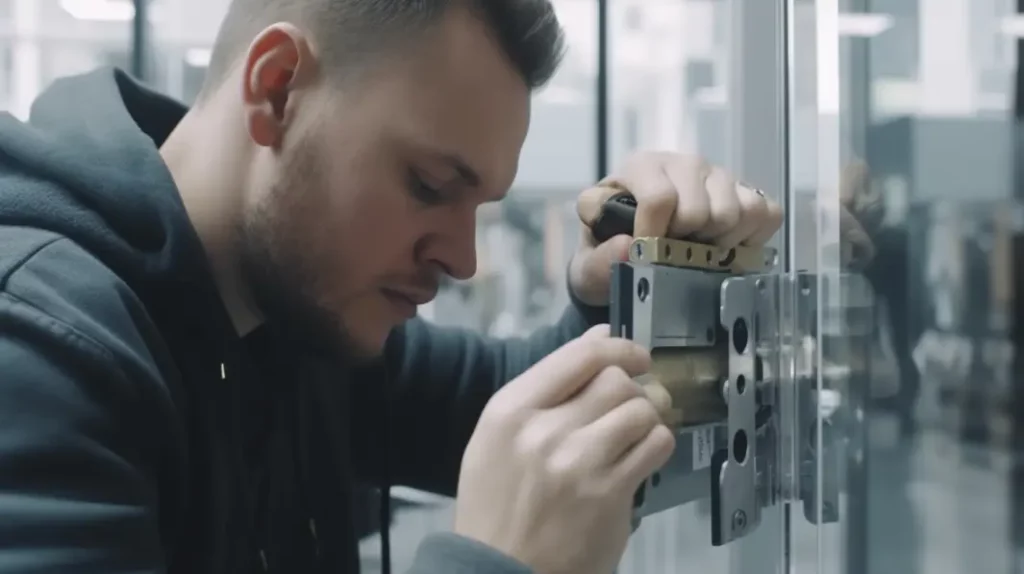
While DIY magnetic lock installation is possible for basic applications, complex solutions benefit tremendously from engaging professional integration services supporting long-term performance.
Contacting a Licensed Installer Jefferson Security Cameras
Reputable security providers like Jefferson Security Cameras offer full-service magnetic door lock solutions spanning:
- Site evaluations and risk assessments
- Customized hardware recommendations
- Access control ecosystem design
- Meticulous installation for guaranteed functionality
- Testing and adjustments during and post-deployment
- Ongoing support services
Their expertise readily equips any environment with properly networked electromagnetic and inductive locking mechanisms tailored to address requirements now and into the future. Jefferson Security Cameras stands ready assisting with magnetic lock advice or budget-friendly installations backed by over three decades securing the Greater Philadelphia area.
Troubleshooting Steps
Basic troubleshooting measures help minimally diagnose common magnetic lock functionality problems if issues emerge:
- Inspect overall door alignment with magnet housing
- Check for any power or wire connectivity interruptions
- Ensure proper power supply voltage still being delivered at sufficient amps
- Re-confirm all sensors and access controllers connections
- Retry operation of credential readers or exit switches/buttons
Isolating the failure domain between wiring faults, component damage or configuration settings helps determine optimal remedies. However for involved troubleshooting or restoration needs, engaging professional assistance proves most efficient. Trusted local providers like Jefferson Security Cameras leverage extensive hands-on expertise supporting swift resolution and readying magnetic locking infrastructure dependably. Their 24/7 emergency support delivers prompt responsiveness to return failed magnetic locks back to proper security functioning.
Conclusion and Final Thoughts
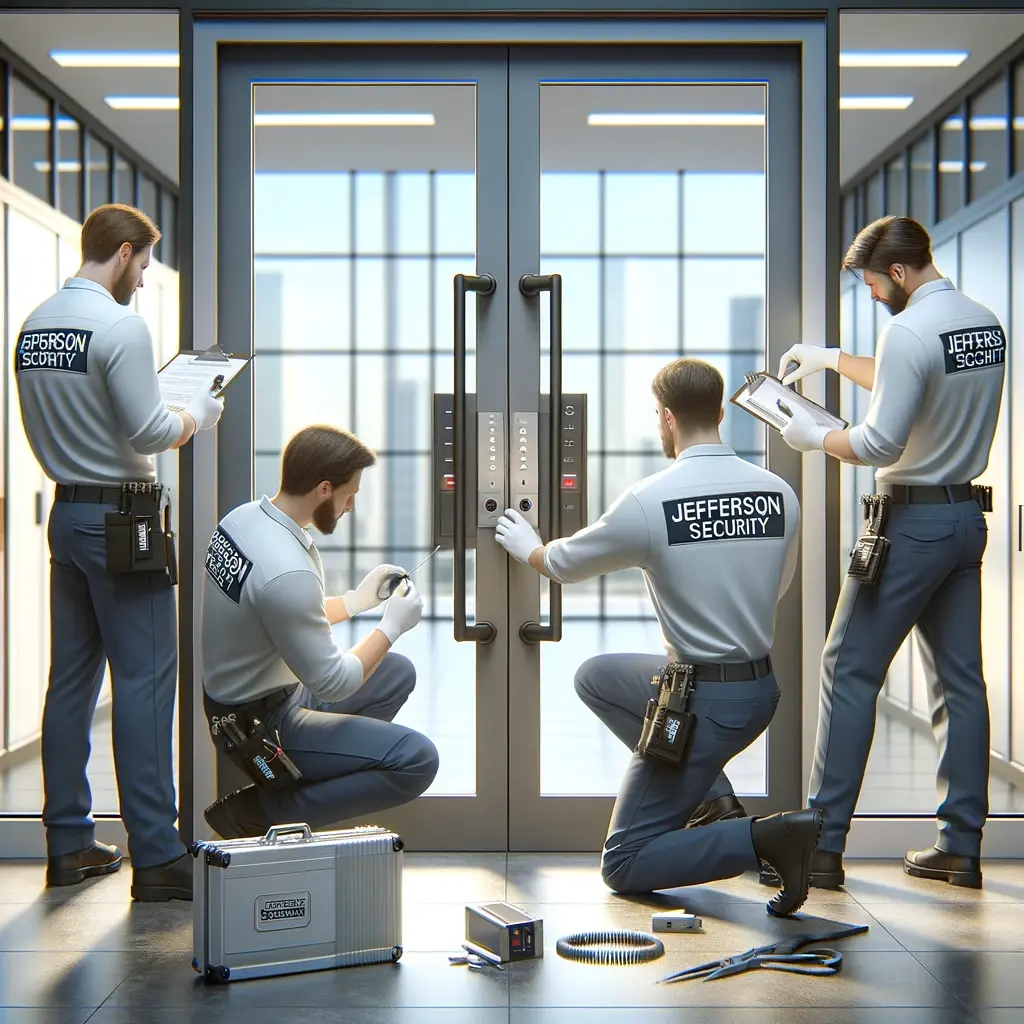
Installing robust magnetic door locks provides one of the strongest access control barriers securing facilities available. Their unique electromagnetic bonding mechanisms reliably resist brute forced entry while integration with sensors and access control systems enables intelligent automation capabilities elevating convenience and oversight. However, properly installing electromagnetic and inductive locks does necessitate professional expertise assuring optimal protections.
Top security integration services provider Jefferson Security Cameras readily equips any environment with expertly designed magnetic lock solutions tailored to address risk priorities. For over 30 years serving the Greater Philadelphia area, Jefferson Security Cameras delivers proven magnetic lock expertise supporting clients across industries. Their experienced consultants evaluate unique needs to recommend ideal options balancing durability, functionality and affordability within project budgets and goals.
Meticulous magnetic lock hardware sourcing combines with precision aligned mounting, verified testing and responsive support. Ongoing services ensure sustained system health and swift resolutions if trouble ever arises. Custom access control platform design allows consistently evolving security postures keeping infrastructure reliable even decades later. This 360-support lifecycle approach brings peace of mind that magnetic lock defenses sustain dependably securing facilities over the long run.
FAQs
What magnetic lock strength should I select?
Electromagnetic lock strength is rated from around 500lbs to over 3,000lbs of holding force depending on the model and power supply. Assess your specific door type and any force exposures expected when closed. Most standard commercial doors function fine secured with 1,200-1,500 lb locks. High traffic entries or exterior doors warrant extra strength 2,000lb+ rated options.
Do magnetic locks comply with fire codes?
Yes, when properly installed with fire egress devices like exit push bars and incorporated contact sensors, electromagnetic and inductive locks readily release open for safe emergency building evacuation meeting most commercial fire codes and ordinances. Manual release buttons can further ensure simple legal compliance.
What is a delayed egress magnetic lock system?
Delayed exit maglocks temporarily hold exits shut for several seconds even when pressed before releasing for authorized egress. This feature aims at deterring unauthorized exits while enabling safe escape when legitimately needed. Delay circuitry gets built into larger access control platforms.
Can I link card readers with magnetic door locks?
Absolutely, integrating magnetic locks with badge/RFID readers, keypads or biometrics provides robust yet convenient access control scalable across unlimited users. Electrified locks interface wirelessly or by wires with most major access control solutions supporting customized permissions.
How much disruption or renovation is needed to install door maglocks?
For existing doors with frames, installing magnetic locks allows surprisingly simple non-invasive installation in most cases requiring minimal disruption. Armature mounting plates, cabling, and aligning the electromagnet housing comprise the majority of the workload, keeping renovations light. Certain specialty doors or glass may need custom fitting. Organizations and homeowners seeking robust door locks with flexible access control and automation should strongly consider installing magnetic locking mechanisms. Their specialized static electromagnetic bonding prevents forced human entry better than any conventional alternatives. With programmable intelligence, integration potential and longevity advantages, electromagnetic locks in particular facilitate moving safeguards progressively forward utilizing advancing technology.
For information on magnetic locks to secure your doors or to arrange a complimentary on-site assessment of your access points, contact the experts at Jefferson Security Cameras at (267) 662-1423. Investing into a tailored magnetic lock system from industry experts brings lasting value to protecting infrastructure for years ahead.





